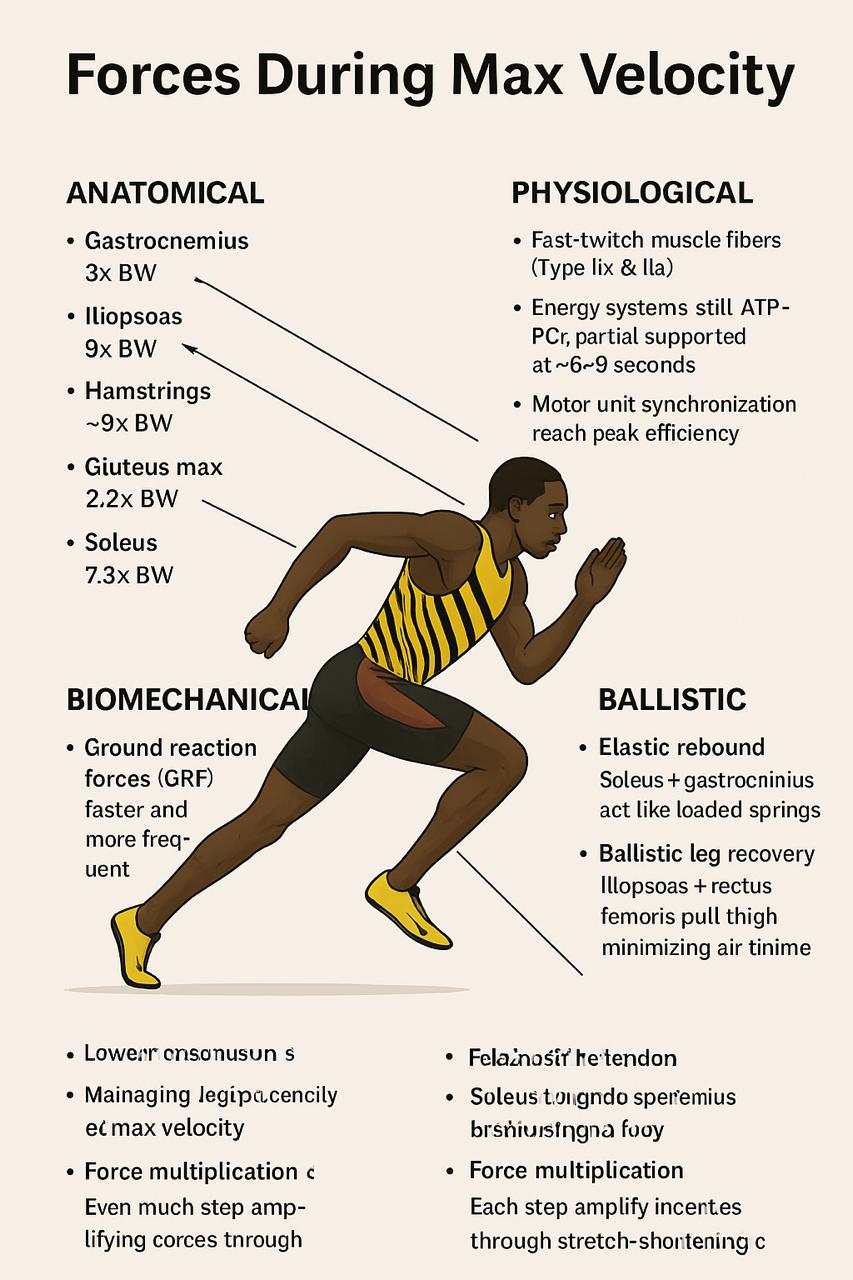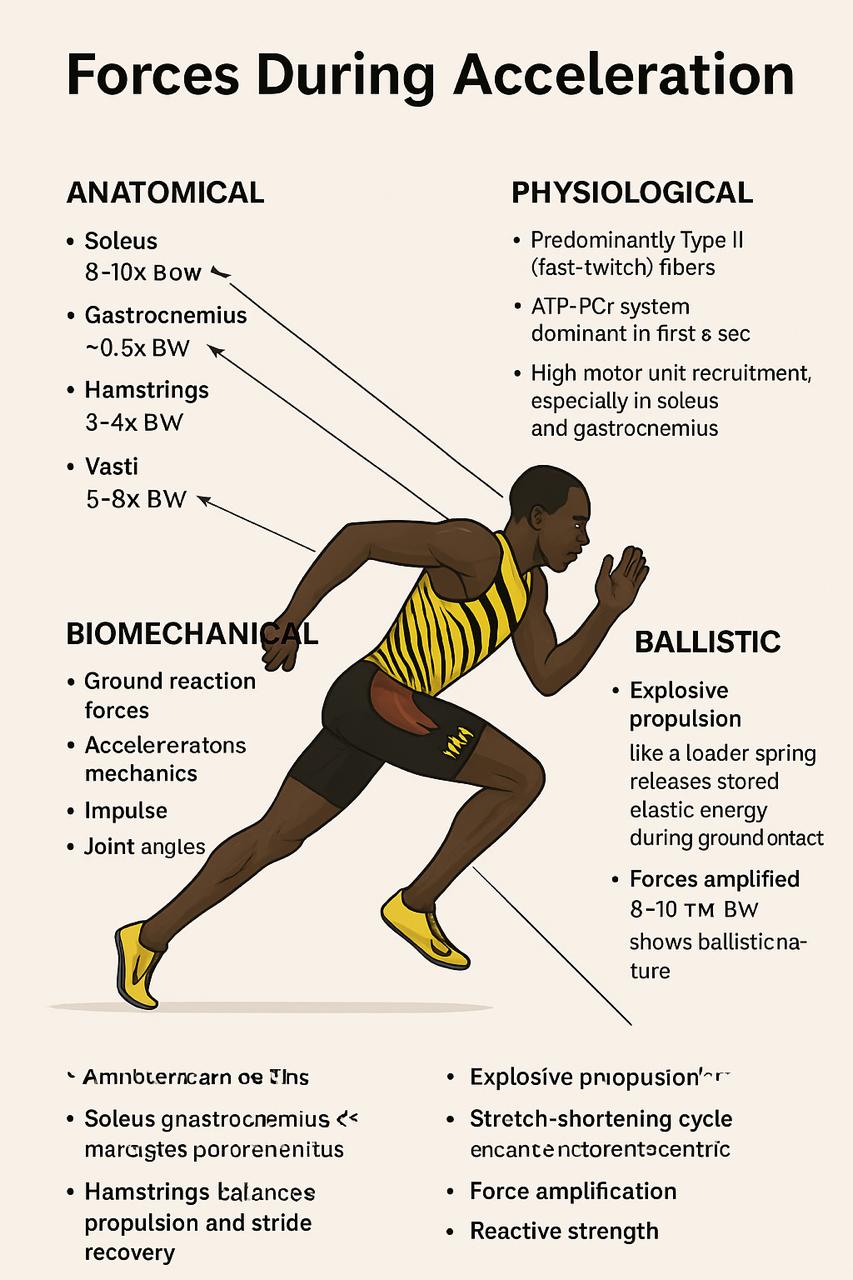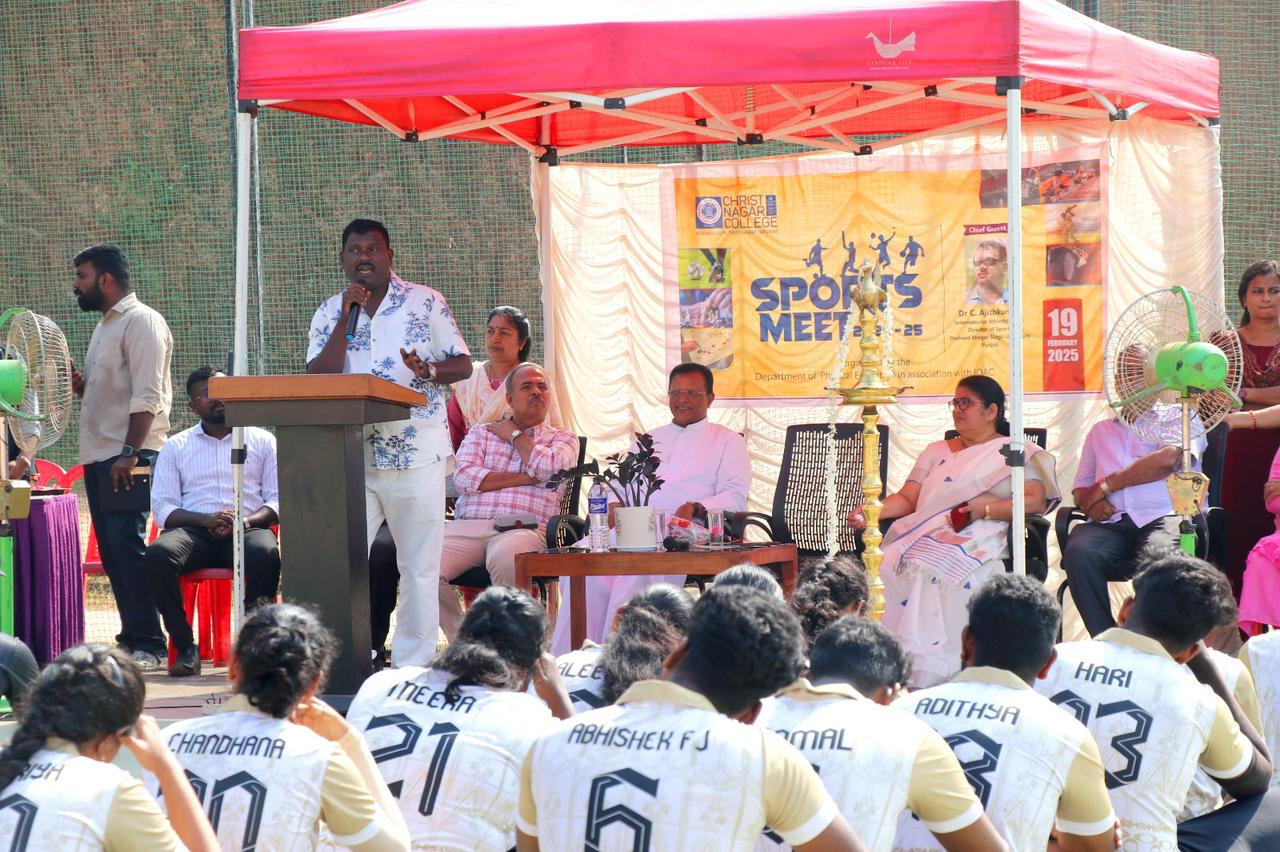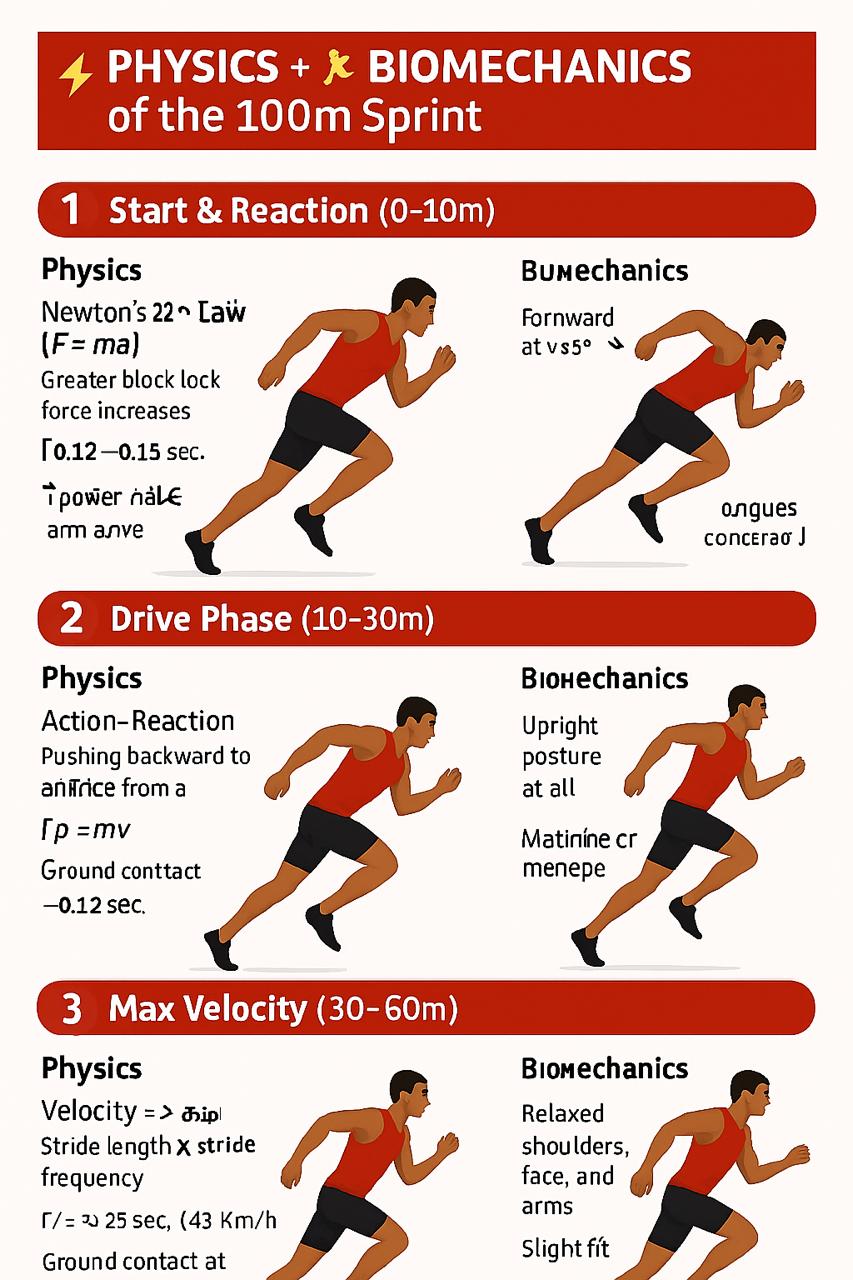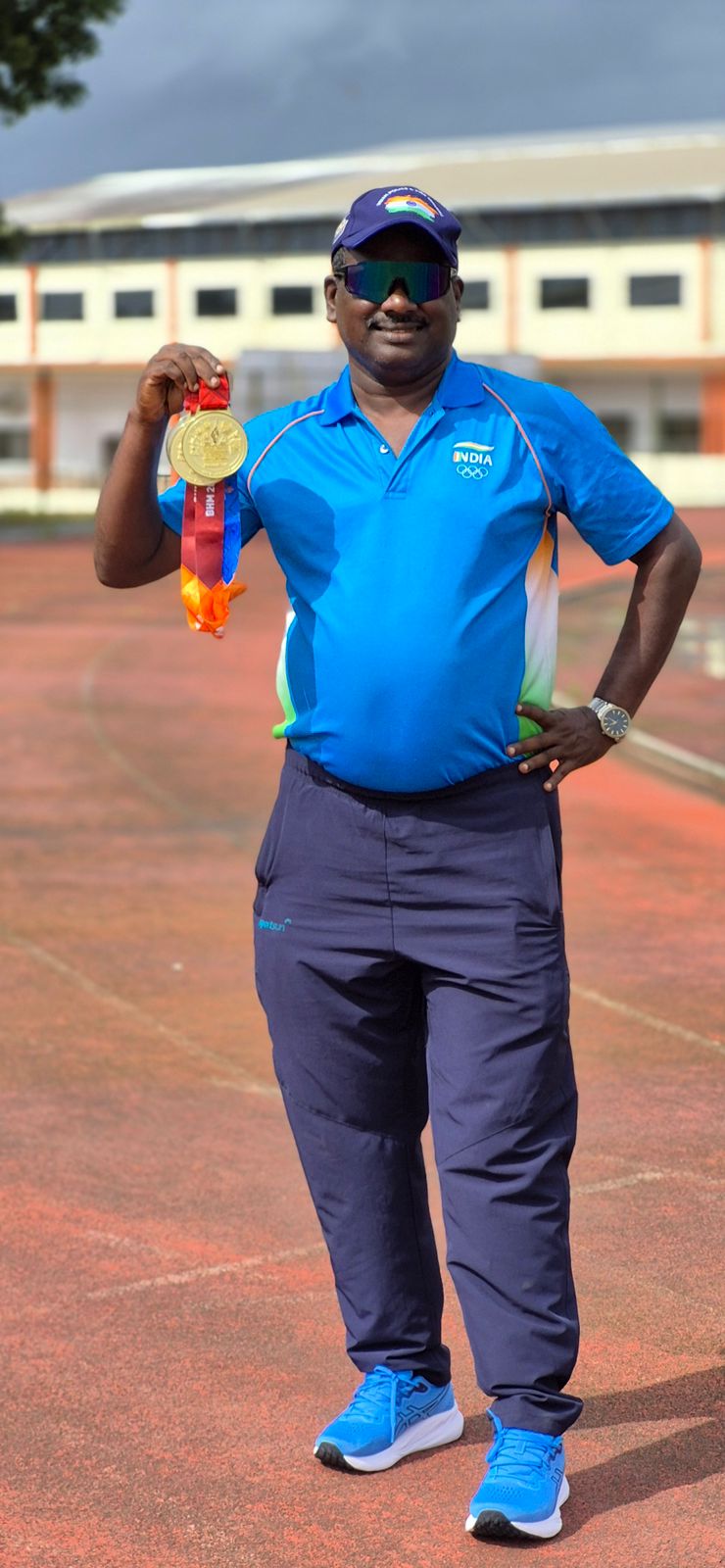Forces During Max Velocity in Sprinting - The Science Behind Top Speed
By Dr. C. Ajithkumar, International Athletics Coach
Anatomical View
- Gastrocnemius (3x BW): Supports ankle plantarflexion during late stance phase.
- Iliopsoas (9x BW): Powerful hip flexor that rapidly pulls the thigh forward during the swing phase.
- Hamstrings (~9x BW): Act as hip extensors and knee stabilizers; critical during late swing to decelerate the leg and prepare for ground contact.
- Gluteus Maximus (2.2x BW): Generates hip extension force during stance and stabilizes the pelvis.
- Soleus (7.3x BW): Maintains explosive ankle stiffness for effective elastic rebound.
- Rectus Femoris (2.8x BW): Assists in hip flexion and knee extension during the recovery stride.
Physiological View
- Fast Twitch Muscle Fiber Dominance (Type IIx and IIa): Enables high contraction speed and force production.
- Energy Systems: ATP PCr remains primary, with partial glycolytic support emerging around six to nine seconds into the sprint.
- Motor Unit Synchronization: Neural firing patterns reach peak efficiency, allowing maximum recruitment of hamstrings and iliopsoas.
- Elastic Storage: The Achilles tendon and hamstring aponeurosis recycle stored energy during each stride.
Biomechanical View
- Ground Reaction Forces (GRF): Lower in magnitude than during acceleration but occur more rapidly with contact times around 0.08 to 0.10 seconds.
- Stride Frequency: Driven by rapid leg recovery from the iliopsoas, crucial for sustaining speeds above 10 meters per second.
- Force Application: Vertical forces dominate to stabilize the center of mass during flight and contact.
- Hamstring Function: Dual role providing propulsion through hip extension and braking during the swing phase.
- Soleus Stiffness: Essential for maintaining reactive ground contact, keeping the athlete moving elastically and efficiently.
Ballistic View
- Elastic Rebound: The soleus and gastrocnemius act like loaded springs, releasing stored energy explosively with each step.
- Ballistic Leg Recovery: The iliopsoas and rectus femoris drive the thigh forward quickly, minimizing air time and maximizing stride frequency.
- Hamstring Ballistics: Manage high eccentric loads up to nine times body weight, preventing injury while preparing the next stride.
- Force Multiplication: Despite short ground contact times, each step amplifies output through the stretch shortening cycle.
Summary
At maximum velocity, sprint speed relies on hamstring strength, iliopsoas-driven hip flexion, and soleus stiffness. The athlete functions as a spring-loaded ballistic system, recycling elastic energy with every step to maintain ultra-fast ground contacts and peak efficiency.

